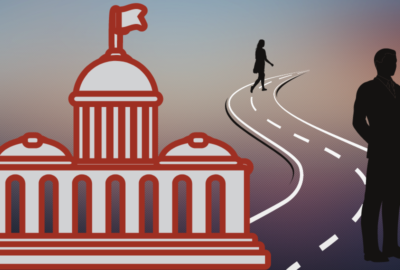Inflation-proofing your FERS benefit: Work longer!
For the vast majority of feds still on the payroll, plus a growing number of those already retired under the newer Federal Employees Retirement System (FERS), big...
Most Social Security and Civil Service Retirement System (CSRS) retirees are quick to cheer when the government — as its about to do — announces they will be getting a much-larger than usual cost of living adjustment. This year they got 1.6%. That was typical for an extended period of low-inflation. Thanks in large part to lower gasoline and production prices. But for the vast majority of feds still on the payroll, plus a growing number of those already retired under the newer Federal Employees Retirement System (FERS), big COLAs mean fiscal heartburn. And it gets worse every year, leaving them with lower annuities because of rising inflation.
The January 2022 COLA is expected to be worth about 6%. But not for everyone. Those under Social Security will get whatever the final amount is. So will CSRS and military retirees. That’s why so many cheer larger COLAs.
But the majority of people still on the federal payroll, plus a growing number who have retired under the FERS program have little or no reason to cheer a big COLA. That’s because they are under a diet COLA formula that doesn’t kick in until they are age 62 and reduces their actual COLA 1% each time it is 2% or more.
Imagine what could happen to an annuity benefit over 10, 20 or 30 years of retirement, particularly if we have extended periods of high inflation. Prices for most things, especially those needed by older people, go up faster than the inflation rate. That loss compounds each year. Unless you work longer and raise your annuity dramatically.
According to benefits expert Tammy Flanagan, an employee under the Federal Employees Retirement System making $80,000 per year could boost their starting annuity by almost $30,000 by sticking around another two years. That, by anybody’s standard, is a lot of money. Now and later. The vast majority of still-working civil servants are under the FERS plan. While it has a less generous civil service benefit than the Civil Service Retirement System it succeeded, FERS workers get Social Security credit and also qualify for a 5% government match to their Thrift Savings Plan accounts. Because it has more moving parts and different rules, retiring under the FERS program can be trickier. But worth it, if done correctly. Working longer for a larger annuity means many FERS retirees can delay tapping into their TSP accounts for years.
Interested?
Here’s her example for how it would work for an employee making $80k:
-
Length of Service at age 60: 19 years
- 19 x $80,000 x 1% = $15,200 x .90 = $13,680 (10% reduction under the MRA + 10 retirement because employee didn’t have 20 years of service at age 60 to qualify for an unreduced retirement)
-
Length of Service at age 61: 20 years
- 20 x $80,000 x 1% = $16,000 + $12,000 = $28,000 (The extra $12,000 represents a FERS supplement of $1,000 a month payable to age 62 when retiree could file for SSA and get an even larger SSA benefit based on their lifetime of FICA taxed wages)
-
Length of Service at age 62: 21 years
- 21 x $80,000 x 1.1% = $18,400 + $24,000 = $42,480 (The $24,000 represents the SSA benefit payable at age 62 of $2,000 a month from their lifetime of FICA taxed wages)
Of course the person who left at age 60 could claim their SSA benefit, but the gap would still be close to $5,000 a year or $600 a month in their FERS basic retirement benefit — for life! They would have benefited from two more years at their presumably highest earning years added to their SSA record, and two more years of contributions and growth to their TSP account.
They could withdraw $24,000 a year from their TSP account so that they could receive $43,000 a year by delaying claiming SSA to age 70, and then take much smaller payments from the TSP so that they will satisfy the required minimum distributions at age 72.
Definitely worth putting in your retirement planning kit. And passing on to a FERS friend. Meantime, listen to today’s Your Turn episode at 10 a.m. EDT streaming here or on the radio at 1500 AM in the Washington D.C. area.
Tammy is now “in retirement” — which in her case means working full-time as a retirement consultant. She can be reached at Tammy@retirefederal.com.
Nearly Useless Factoid
By Alazar Moges
Halloween is the second largest commercial holiday in the country. It ranks second after only Christmas. Consumers spent approximately $9 billion on Halloween in 2019, according to the National Retail Federation. Spending was down a bit in 2020 because of the COVID-19 pandemic, but Americans still forked over $8 billion overall, or an average of $92 per person.
Source: Good Housekeeping
Copyright © 2025 Federal News Network. All rights reserved. This website is not intended for users located within the European Economic Area.
Mike Causey is senior correspondent for Federal News Network and writes his daily Federal Report column on federal employees’ pay, benefits and retirement.
Follow @mcauseyWFED






